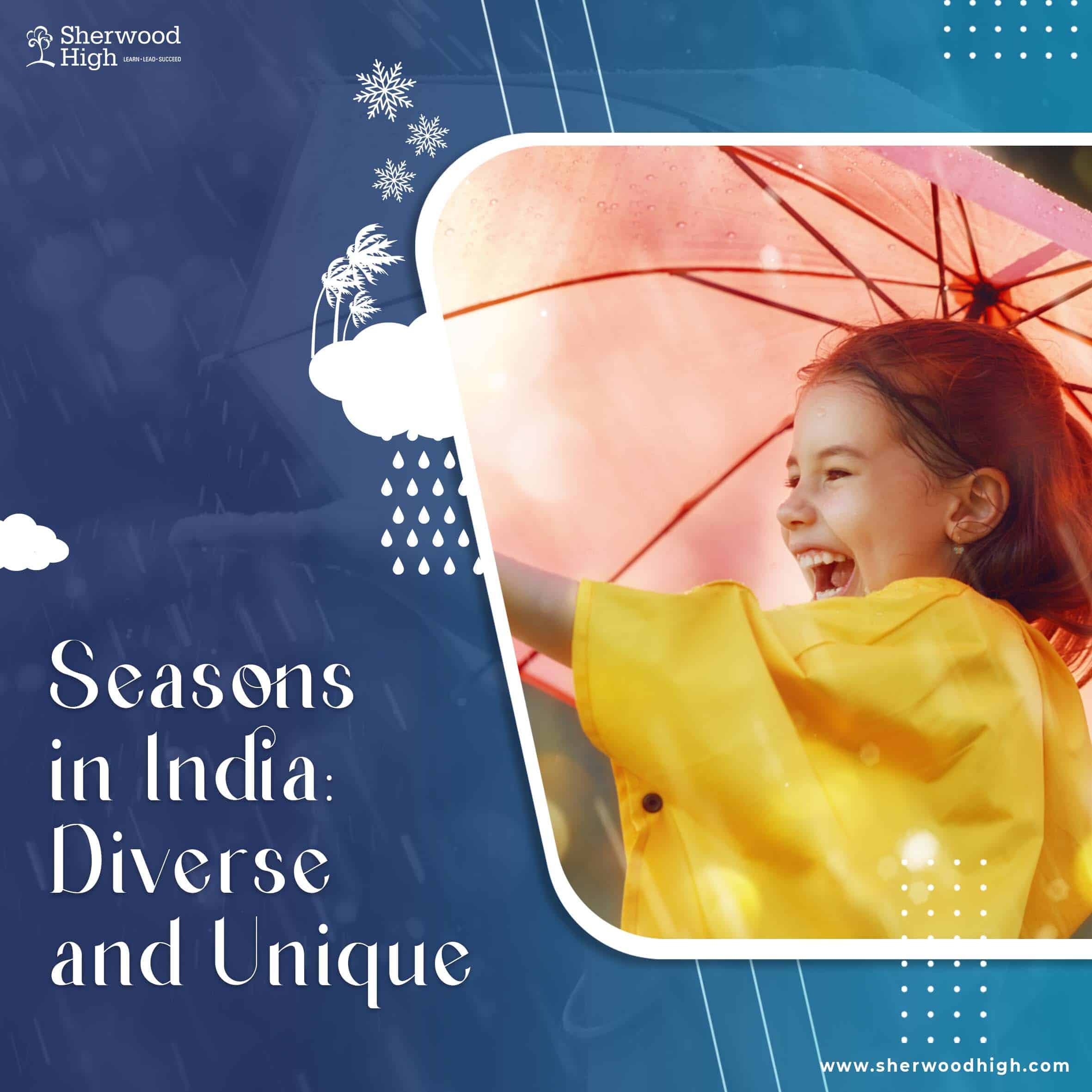
Seasons in India: Diverse and Unique
Seasons in India: Diverse and Unique
As diverse as the country’s culture and natural beauty, the seasons of India bring out its true colours
India’s geographical diversity comes with a unique spectrum of seasons and climatic conditions
India is among the most naturally diverse countries in the world, which obviously means a great diversity in its seasons as well. India’s true beauty comes to the fore differently in different regions and each season brings a different shade of nature in every region.
With the sheer size and vastness of geography, it is natural for a country like India to have a range of topographies, biodiversity and climatic conditions.
The vastness of the geography also ensures the vast differences in the patterns of every season in each region, with every region presenting a peculiarity that is unfound anywhere else.
Winter in the Himalayan regions of Kashmir, Himachal Pradesh and Uttarakhand are blanketed by heavy snowfall, while in the southeastern states such as Tamil Nadu and Andhra Pradesh it is marked by rainfall and warm, comfortable temperatures.
Even within some states, the topography and elevations vary so much that the weather in these sub-regions could be different in the same time of the year.
For example, summer in most parts of central and western Indian states such as Gujarat, Rajasthan, Madhya Pradesh, Delhi and Uttar Pradesh are very harsh with temperatures shooting beyond 50 degrees °C, however, in the coastal regions of Kerala, Karnataka and Maharashtra the weather is hot and humid throughout the year, except during the monsoon months of June to October. Winter is almost non-existent in these regions.
These regions also receive higher volume of rainfall than other parts of India.
However, despite this fluidity in the weather patterns and the diversity in the regional climatic trends, India does have a set range of seasons.
Just like the great diversity in its people and cultures, India’s seasons are also diverse in the way they come alive, each having its own individual charm and appeal and each triggering a range of customs and practices that are unique to each region.
India experiences five seasons, with the duration of around two months each on an average.
However, in a state like Rajasthan the summer is long and harsh, lasting up to five months and the monsoon is scant to non-existent, while in coastal Karnataka the monsoon lasts for five months and winter is almost non-existent.
Here is a look at the general trend and patterns of seasons in India:
- Spring (February-March)
- Summer (April to July)
- Monsoon (June to September)
- Autumn (September-October)
- Winter (December-February)
Spring:

Spring is among the most celebrated seasons in India, representing joy and happiness. It symbolises the return of life after the bitter cold in many parts of India, especially in the north and the hilly regions in both the south and the north where temperatures reach subzero levels.
It is marked by the flowering of the trees and plants and the return of the migratory birds. It is a season when the atmosphere is buzzing with the bees and insects thriving on the sweet nectar of the fresh blossoms.
Spring is the season historically romanticised by most famous Indian poets as the season of lovers, reunion and the blossoming of life.
According to most travel experts, this is the best time to travel through the country and enjoy the beauty of India!
Summer
Though, summer in some parts of India is unbearably hot, it is also the time of ripening. It is a time when some of the best known Indian fruits instil the much-needed juice in people’s lives. From jackfruits and jamuns to lime and lychee, every fruit provides the much-needed energy as an antidote to the sapping heat.
However, no other fruit revitalises Indians as much as the mango and no other fruit is devoured as voraciously by Indians as this king of fruits.
Despite the respite provided by the fruits, summer in India is indeed scorching.
In the northwest, summer peaks from April to July, while in the most other parts of the country, the months from March to June experience peak summer.
April is the hottest month in the southern and western parts of India, while in the north, May is the hottest month.
Summers are particularly harsh in the western and central parts of India, with temperatures hovering around 50 °C. In the coastal regions, temperatures hover around 35 °C, but the proximity of the sea increases the levels of humidity.
In south India, the east coast is generally hotter than the west coast, while the levels of humidity is higher in the west coast.
Summer in the south comes with a range of temperatures, depending on the altitude and topography.
The higher altitude places of the Western Ghats such as Ooty, Chikmagalur, Munnar and Mahabaleshwar offer cool respite even during peak summer, which is the reason why these hill stations are thronged by vacationers during this season.
Even in the north, hilly cities such as Srinagar, Shimla, Nainital and Darjeeling are popular summer retreats, known for their pleasant and comfortable summer months.
However, most of the northern plans and the Deccan plateau experience sweltering heat, with many northern and western cities facing heat waves leading to many deaths, mostly among manual labourers, street vendors, rickshaw pullers and street dwellers.
Monsoon

Monsoon is the most unique season in India. No other season is as transformative as monsoon, and no other monsoon system is as profound as the Indian Monsoon!
In India, monsoon is not just a season of rains. It’s a time of revival. A season when the land comes alive again, when life finds its feet again. It’s the most eagerly awaited time of the year for many. Millions of farmers rejoice the arrival of rain as it brings them the much needed water to sow their seeds of life and irrigate their lands with hope and energy.
Despite the industrial progress of the country, Indian economy is still agrarian and good rainfall means bumper crop and better economic prospects for millions.
Monsoon is when life drips from buds and leaves, it is when the birds and animals are chirpiest and nippiest. It is also the mating season in the wild.
It is the time for many wild blossoms and food unique to the season, such as edible wild mushrooms.
However, monsoon also brings destruction to many regions, with the ecological imbalance wrought by the human activities leading to floods.
The pre-monsoon showers in the western coast of India begins in mid-may and are marked by thunderstorms.
The southwest monsoon officially begins in early June and lasts for four months in the west coast, with some regions receiving scattered rainfall till early November.
Monsoonal torrents, a product of the Southeast trade winds that originates from the Indian Ocean is responsible for more than 80 per cent of the annual rainfall in India.
The monsoon begins and ends in south, receiving majority of the rainfall, while the north receives rainfall for about two months between July and September.
Though, the northeastern part of India receives significant rainfall, the western states such Rajasthan, Haryana, Punjab and some parts of Gujarat receives least rainfall. Some interior parts of the Deccan Plateau are also among the driest in the country.
Little or more, every region in India receives some rainfall and the monsoon magic works on each one of us.
Autumn
Autumn is the festive season in India, it is when most of India’s traditional festivals take place.
Post monsoon, the weather is mild and peppy, the fields are green and abundant with the crops and there is a general zing in the air.
From Diwali and Dusshera to Navratri and Durga Puja, some of India’s most popular festivals are celebrated during this season. Autumn may be the shortest season in India, but it is easily the most pleasant time of the year!
Winters
Winters literally send shivers down the spine of many in India as for some regions it is the most difficult time of the year. Though, the season holds its own charm, it is also the time for many to stay indoors, clinging to the heaters.
Following monsoon, temperatures in India start dropping and most of northern India comes under a cold spell.
The Himalayan regions of Kashmir, Himachal and Uttarakhand come to a standstill with heavy snowfall. The temperatures in these regions drop down to -15 °C.
Even in the plains of north and central India, temperatures approache zero °C, with the average hovering around 5-8 °C during peak winter.
However, in most of the southern and western India the weather is pleasant and mild with temperatures lingering around the average of 25 °C, while in the high altitude regions of the south the lows would be around 10 °C.
Conclusion

Seasons in India are as unique as India itself, with plenty of eccentricities that are not found in other parts of the world. India is a world in itself, offering a parallel ecosystem that is unlike any other!






